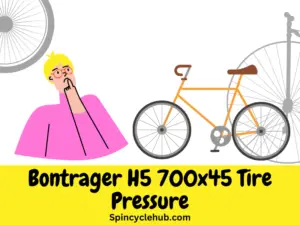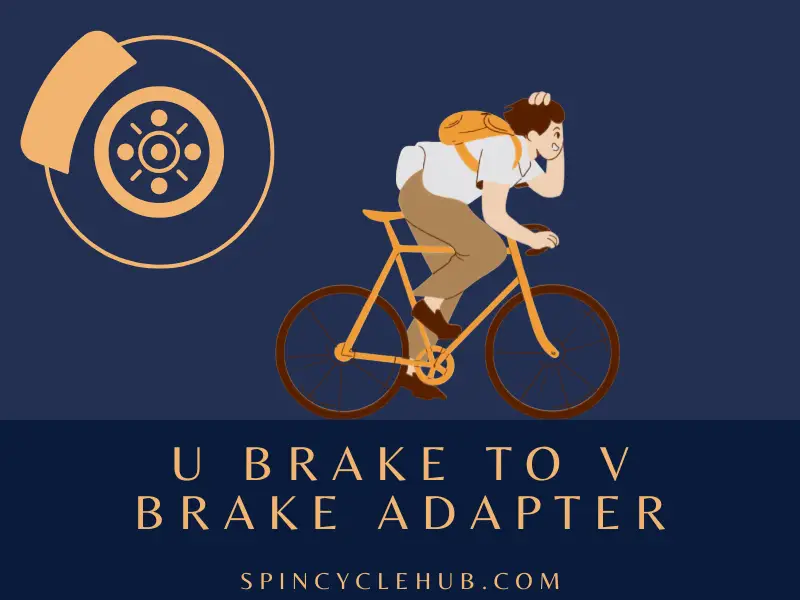The Importance of Tire Pressure for a Smooth Ride
When it comes to cycling, tire pressure plays a crucial role in ensuring a smooth and enjoyable ride. The right tire pressure not only affects comfort but also impacts performance, traction, and control. If you’re a proud owner of Bontrager H5 700×45 tires or considering getting them, understanding the ideal tire pressure is essential for an optimal riding experience.
Getting to Know the Bontrager H5 700×45 Tire
The Bontrager H5 700×45 tire is a popular choice among cyclists for its versatility and durability. It is designed to perform well on both pavement and light off-road terrain, making it suitable for a variety of riding styles. To make the most of these tires, it’s crucial to find the right tire pressure that suits your needs and preferences.
Understanding Tire Pressure
The Basics of Tire Pressure
Tire pressure refers to the amount of air inside the tire, measured in pounds per square inch (PSI). Maintaining the correct tire pressure is vital as it affects various aspects of your ride, including comfort, handling, rolling resistance, and overall performance. Both overinflating and underinflating the tires can lead to suboptimal riding conditions.
Why Tire Pressure Matters
Optimal tire pressure ensures that the tire’s contact patch with the road or trail is maximized, providing better grip and control. When the tire is properly inflated, it absorbs shocks more effectively, leading to a smoother and more comfortable ride. Additionally, the right tire pressure helps prevent pinch flats and reduces the risk of sidewall damage.
The Ideal Tire Pressure Range
The ideal tire pressure varies depending on factors such as rider weight, load, terrain, and riding style. Generally, a good starting point is to follow the manufacturer’s recommended tire pressure guidelines. However, these recommendations should be viewed as a starting point, and adjustments can be made based on personal preference and riding conditions.
Factors Affecting Tire Pressure
External Factors That Influence Tire Pressure
Several external factors can affect tire pressure, including temperature, rider weight, and the type of terrain you’ll be riding on. It’s important to consider these factors when determining the right tire pressure for your Bontrager H5 700×45 tires.
Temperature and Its Impact on Tire Pressure
Temperature fluctuations can cause significant changes in tire pressure. As temperatures rise, the air inside the tire expands, leading to an increase in pressure. Conversely, colder temperatures can cause the air to contract, resulting in decreased pressure. Regularly checking and adjusting tire pressure based on temperature changes is crucial for maintaining optimal performance.
Rider Weight and Load Considerations
Rider weight and the load you’re carrying can influence tire pressure. Heavier riders or those carrying additional gear may require higher tire pressures to support the weight and prevent pinch flats. On the other hand, lighter riders may benefit from slightly lower tire pressures for increased comfort and traction.
Terrain and Riding Style
The type of terrain you’ll be riding on and your preferred riding style also impact tire pressure. For smooth pavement and higher speeds, a slightly higher tire pressure may provide better rolling efficiency. However, if you plan to venture off-road or encounter rough surfaces, lower tire pressures can improve traction and shock absorption.
Finding the Right Tire Pressure
The Trial and Error Approach
Finding the perfect tire pressure is often a process of trial and error. Start by following the manufacturer’s recommended tire pressure range. From there, make small adjustments based on personal preference and feedback from the bike.
Starting with the Manufacturer’s Recommendation
The Bontrager H5 700×45 tire comes with manufacturer-recommended tire pressure guidelines. These guidelines provide a good starting point for finding the optimal pressure range for your specific tires. The recommended pressure is usually imprinted on the tire sidewall or included in the product documentation.
Adjusting for Personal Preference and Riding Conditions
Once you’ve set your tire pressure based on the manufacturer’s recommendation, it’s time to consider personal preferences and specific riding conditions. Some cyclists may prefer slightly higher or lower pressures for comfort or performance reasons. Additionally, adjusting tire pressure based on factors like terrain and weather conditions can further enhance your riding experience.
Paying Attention to Feedback from the Bike
The bike itself can provide valuable feedback regarding tire pressure. Pay attention to how the tires feel during your rides. If you experience excessive bouncing or feel every little bump, it might be an indication of overinflation. Conversely, if you notice a sluggish and slow ride, it could be a sign of underinflation. Fine-tuning the tire pressure based on these observations will help you find the sweet spot.
The Bontrager H5 700×45: A Versatile Tire
Overview of the Bontrager H5 700×45 Tire
The Bontrager H5 700×45 tire is designed to excel on both paved roads and light off-road trails. It features a versatile tread pattern that provides low rolling resistance on smooth surfaces while offering sufficient grip on gravel or hard-packed dirt paths. The H5’s durable construction ensures longevity and puncture resistance, making it a reliable choice for various riding conditions.
Features and Benefits of the Bontrager H5
The Bontrager H5 700×45 tire boasts several features that contribute to its performance and versatility. Its semi-slick tread design strikes a balance between efficient rolling and traction, making it suitable for both commuting and recreational riding. The tire’s casing is durable, capable of withstanding minor impacts and resisting punctures, ensuring a longer lifespan.

Recommended Tire Pressure for Bontrager H5 700×45
Bontrager’s Recommended Tire Pressure Guidelines
Bontrager provides recommended tire pressure guidelines specific to the H5 700×45 tire. These guidelines consider the tire’s intended use and provide a recommended pressure range. However, it’s important to note that these recommendations serve as a starting point, and individual preferences and riding conditions should be taken into account.
Considerations for On-Road Riding
For on-road riding with the Bontrager H5 700×45 tire, a tire pressure towards the higher end of the recommended range can provide improved rolling efficiency and reduced resistance. This can enhance speed and make your commute or road rides more enjoyable.
Considerations for Off-Road Riding
When venturing off-road or tackling mixed terrain, lower tire pressures can increase traction and shock absorption. Experiment with tire pressures towards the lower end of the recommended range to find the balance that suits your preferences and provides optimal grip and control.
Tips for Maintaining Optimal Tire Pressure
Regular Pressure Checks and Adjustments
To ensure a smooth and enjoyable ride, it’s crucial to regularly check and adjust your tire pressure. Changes in temperature and riding conditions can affect tire pressure, so it’s important to make necessary adjustments accordingly. Aim for a routine check before each ride to maintain optimal performance.
Invest in a Quality Tire Pressure Gauge
Having a reliable and accurate tire pressure gauge is essential for maintaining the correct pressure. Invest in a quality gauge that allows you to measure the pressure with confidence. Portable and easy-to-use digital or analog gauges are readily available, ensuring you’re equipped to make necessary adjustments whenever needed.
Beware of Overinflating or Underinflating
While finding the right tire pressure is important, it’s equally crucial to avoid overinflating or underinflating your Bontrager H5 700×45 tires. Overinflated tires can lead to a harsh ride, reduced traction, and an increased risk of punctures. Conversely, underinflated tires may negatively impact rolling efficiency, handling, and control. Regularly check and adjust tire pressure to maintain the sweet spot.
The Impact of Tire Pressure on Performance
The Connection Between Tire Pressure and Performance
Tire pressure directly affects the performance of your bike. By finding the optimal tire pressure for your Bontrager H5 700×45 tires, you can enhance various aspects of your ride.
Finding the Balance for Speed and Comfort
The right tire pressure allows for a balance between speed and comfort. Optimal pressure reduces rolling resistance, enabling you to ride faster and cover more ground effortlessly. At the same time, it ensures sufficient cushioning to absorb shocks and vibrations, providing a comfortable ride experience.
Improving Traction and Control
Tire pressure significantly impacts traction and control. Properly inflated tires maximize the tire’s contact patch with the road or trail, enhancing grip and stability. This is particularly crucial when navigating corners, uneven terrain, or off-road trails, where traction plays a vital role in maintaining control and confidence.
Conclusion
The Perfect Tire Pressure: A Balancing Act for a Smooth Ride
Finding the right tire pressure for your Bontrager H5 700×45 tires is a process that involves experimentation, personal preference, and consideration of riding conditions. By following manufacturer recommendations, making adjustments based on feedback from the bike, and considering factors like temperature, rider weight, and terrain, you can achieve the perfect balance for a smooth and enjoyable ride.
FAQs
1. Can I use a different tire pressure than the manufacturer’s recommendation?
Yes, you can make adjustments to the tire pressure based on personal preference and riding conditions. The manufacturer’s recommendations serve as a starting point, but it’s important to find the pressure that suits your needs and provides optimal performance.
2. What are the signs of incorrect tire pressure?
Signs of incorrect tire pressure include excessive bouncing, a harsh ride, reduced traction, and a sluggish feeling. Regularly checking and adjusting tire pressure can help alleviate these issues.
3. Is it necessary to adjust tire pressure for different riding conditions?
Yes, adjusting tire pressure based on different riding conditions can enhance performance and comfort. Lower pressures may be beneficial for off-road or mixed-terrain riding, while higher pressures can improve efficiency on paved roads.
4. How often should I check my tire pressure?
It’s recommended to check your tire pressure before each ride, especially if there have been temperature changes or if you’re transitioning between different riding conditions.
5. Can tire pressure affect tire lifespan?
Yes, maintaining the correct tire pressure can contribute to a longer tire lifespan. Overinflated tires can increase the risk of punctures and sidewall damage, while underinflated tires may wear prematurely. Regular pressure checks and adjustments help ensure optimal tire performance and longevity.
Watch this one,
Video Credits – REI
DOWNLOAD THIS ARTICLE : Bontrager H5 700×45 Tire Pressure
You May Also Like
- Brakes on Bullhorn Handlebars: Enhancing Safety and Control
- Bulge in Bike Tire : A Bumpy Ride or a Serious Concern?
- 60 vs 120 TPI: Unraveling the Thread Count Mystery
- U Brake to V Brake Adapter: Simplifying Your Brake Upgrade



